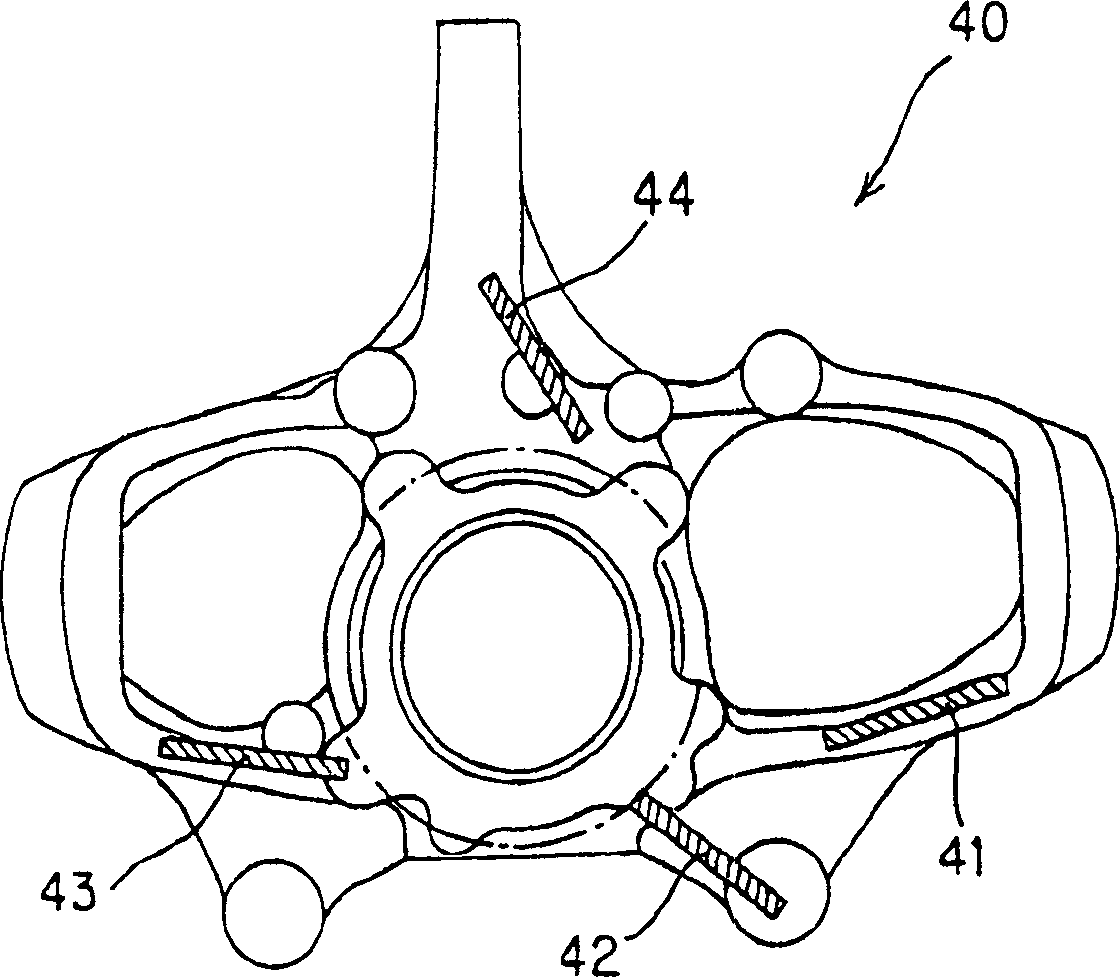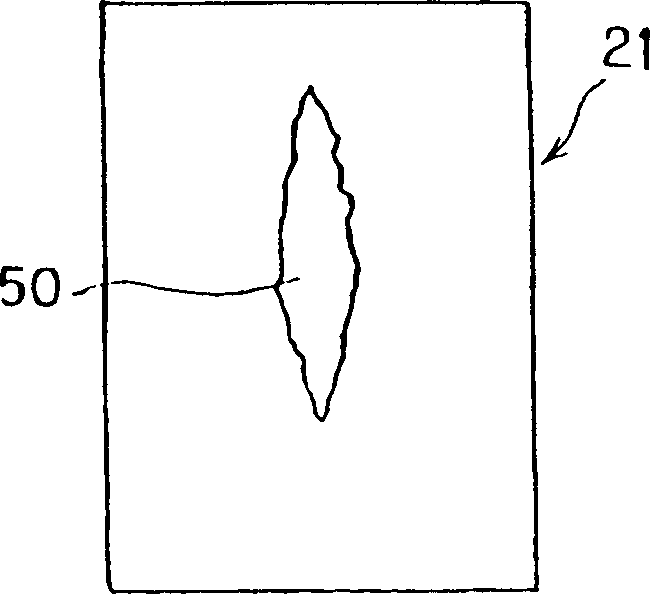Aluminium allloy for casting/forging, aluminium alloy cast/forged product and producing methods
A manufacturing method and forging technology, applied in the field of casting and forging manufacturing, can solve the problems of no aluminum products, strength reduction, strength reduction, etc., and achieve the effects of reducing manufacturing costs, improving fuel consumption performance, and simplifying manufacturing processes.
- Summary
- Abstract
- Description
- Claims
- Application Information
AI Technical Summary
Problems solved by technology
Method used
Image
Examples
Embodiment 1
[0067] figure 1 It is a diagram showing an example of the aluminum cast forging of the present invention, and it is a steering knuckle 40 as an automobile component.
[0068] A small amount of manganese is added to the scrap of A6061 alloy to prepare raw materials containing 0.6% by weight of silicon, 0.8% by weight of magnesium, 0.2% by weight of copper, and 0.03% by weight of manganese. Based on this, the following procedures are used to manufacture figure 1 The shape of the steering knuckle 40 is described.
[0069] After melting the raw material at a melting temperature of 728°C to obtain a molten metal, when the shape of the final steering knuckle 40 is taken as 100%, using a mold having a shape with a processing rate of 30% compared with it, the casting process is carried out at a mold temperature of 100°C. take shape. Secondly, at a rough forging temperature of 395° C. (surface temperature), die forging is carried out by applying a rough forging load of 2,770 tons to ...
Embodiment 2
[0075] Change the temperature conditions and load conditions, except that the molten metal temperature is 720°C, the mold temperature is 125°C, the rough forging temperature is 400°C, the rough forging load is 2730 tons, the precision forging temperature is 445°C, and the precision forging load is 3780 tons. Others are the same as in Example 1, a steering knuckle is manufactured, and its mechanical properties are studied.
[0076] Temperature conditions and load conditions are shown in Table 1 and Table 2. Table 3 shows the measurement results of mechanical properties.
[0077] As can be seen from the results of Example 1 and Example 2, it can be ensured that the mechanical properties of the aluminum casting forging of the present invention, such as tensile strength, yield strength, and elongation, are all higher than those produced in the forging process of the prior art. Specification value of A6061FD.
Embodiment 3
[0079] The same raw materials as in Example 1 were prepared to produce cylindrical test pieces. After melting at a melting temperature of 728° C. to obtain a molten metal, a raw material for forging is formed. When forging, the processing rate of crafting is changed to 5%, 12%, 15%, 18%, 27%, 30%, 37%, 41%, 45%, 51%, 60%, 67%, 73%, 80% of 14 products.
[0080] FIG. 2( a ) is a graph showing the difference in shape for each processing rate, and internal observations were carried out for forging raw materials (cylindrical test pieces) with different shapes.
[0081] As a result, as shown in FIG. 2( b ), internal defects remained in the raw material for forging with a working ratio of 13% or less. When the processing rate is 18% or more, all the internal defects are good as shown in Fig. 2(c).
PUM
 Login to View More
Login to View More Abstract
Description
Claims
Application Information
 Login to View More
Login to View More - R&D
- Intellectual Property
- Life Sciences
- Materials
- Tech Scout
- Unparalleled Data Quality
- Higher Quality Content
- 60% Fewer Hallucinations
Browse by: Latest US Patents, China's latest patents, Technical Efficacy Thesaurus, Application Domain, Technology Topic, Popular Technical Reports.
© 2025 PatSnap. All rights reserved.Legal|Privacy policy|Modern Slavery Act Transparency Statement|Sitemap|About US| Contact US: help@patsnap.com



